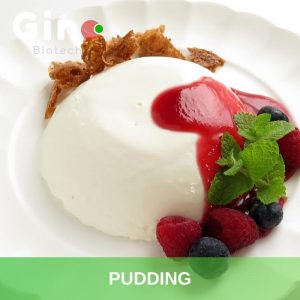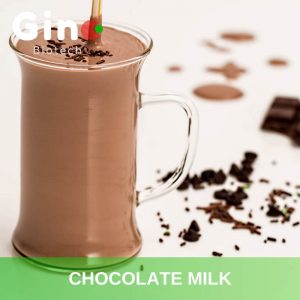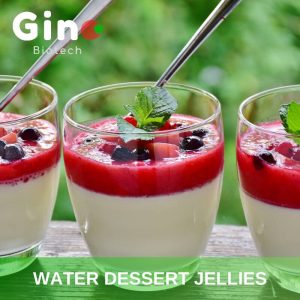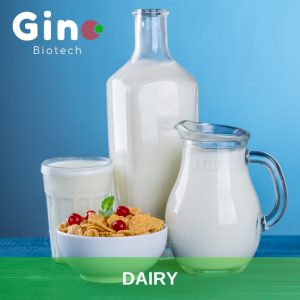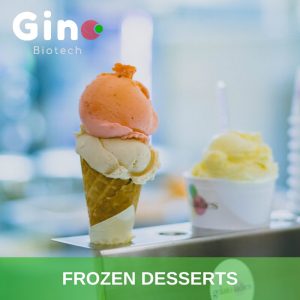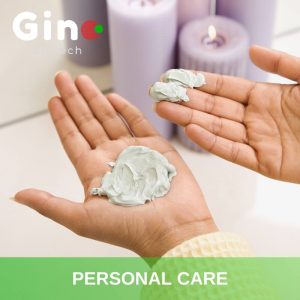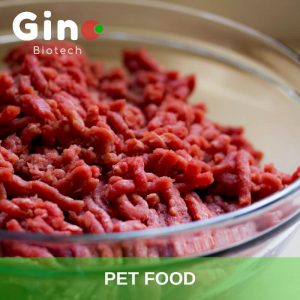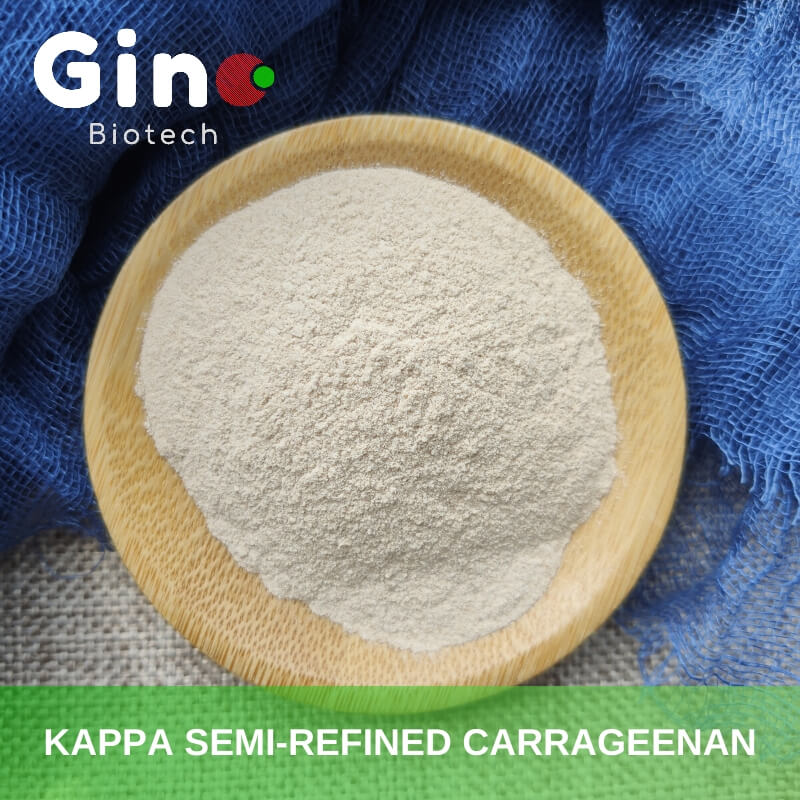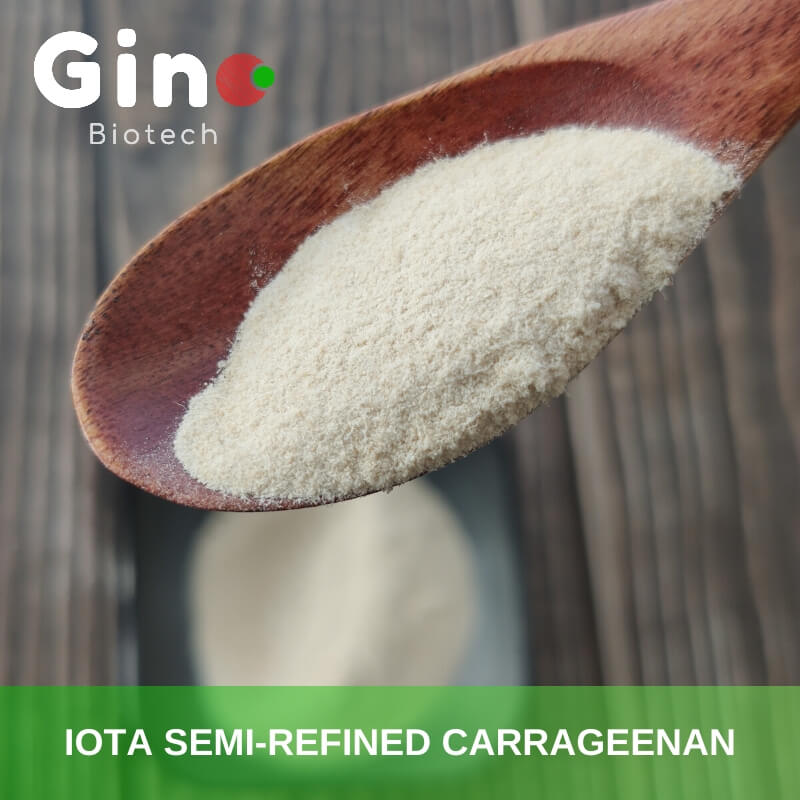Karagen
Dostawca karagenu w Chinach
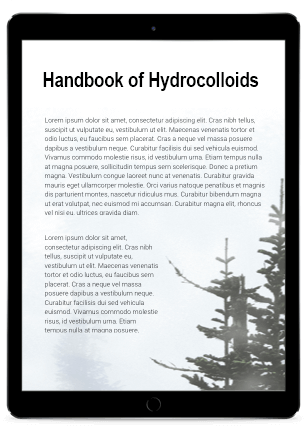
Podręcznik hydrokoloidów: Przewodnik po karageninie
Karagen, rozpuszczalny błonnik i hydrokoloid pochodzący z czerwonych wodorostów, jest naturalnym składnikiem żywności stosowanym od setek lat w kuchni na całym świecie.
Często zastępuje produkty syntetyczne i pochodzenia zwierzęcego (takie jak żelatyna). Jest również powszechnie stosowany w dietach wegetariańskich i wegańskich.
Karagen jest używany w różnych zastosowaniach komercyjnych jako środek żelujący, zagęszczający i stabilizujący, zwłaszcza w produktach spożywczych i sosach. Oprócz tych funkcji, karageny są wykorzystywane w medycynie eksperymentalnej, preparatach farmaceutycznych, kosmetykach i zastosowaniach przemysłowych.
Zostaw swój adres e-mail, aby pobrać pełny plik PDF z Handbook of Hydrocolloids
Producent karagenu | Dostawca karagenu
Co to jest karagen
Karagen, rozpuszczalny błonnik i hydrokoloid pochodzący z czerwonych wodorostów, jest naturalnym składnikiem żywności stosowanym od setek lat w kuchni na całym świecie.
Często zastępuje produkty syntetyczne i pochodzenia zwierzęcego (takie jak żelatyna). Jest również powszechnie stosowany w dietach wegetariańskich i wegańskich.
Karagen jest używany w różnych zastosowaniach komercyjnych jako środek żelujący, zagęszczający i stabilizujący, zwłaszcza w produktach spożywczych i sosach. Oprócz tych funkcji, karageny są wykorzystywane w medycynie eksperymentalnej, preparatach farmaceutycznych, kosmetykach i zastosowaniach przemysłowych.
Jakie są 3 główne struktury karageniny?
-
Kappa Carrageenan = twardy żel
-
Iota Carrageenan = Elastyczny żel
-
Karagen lambda = zagęszczacz
Oferowane przez nas produkty
Jako globalny dostawca karageniny z Chin, wybieramy tylko najlepsze produkty od wykwalifikowanych producentów i producentów karageniny. Gino może zaoferować całą gamę produktów karagenowych, jak poniżej:
Arkusz danych technicznych
Specyfikacja karagenu Wszystko w jednym
| Właściwości sensoryczne: | ||||
| Jest to drobnoziarnisty proszek o lekko białawym kolorze i neutralnym zapachu i smaku. | ||||
| Charakterystyka chemiczna i fizyczna: | ||||
| Kappa Refined | Kappa Semi-Refined | Iota Refined | Iota Semi-Refined | |
| Lepkość (1.5% 75 ℃) | ≥ 5 mPa.s | |||
| Wytrzymałość żelu (1,5% + 0,2% KCL 20 ℃) | ≥1,300 g/cm2 | ≥450 g/cm2 | --- | --- |
| Wilgotność (105 ℃) | ≤12% | |||
| Całkowity popiół (550 ℃) | 15-40% | |||
| pH (1%) | 8-11 | |||
| Siarczany | 15-40% | |||
| Popiół nierozpuszczalny w kwasie | ≤ 1% | |||
| Substancje nierozpuszczalne w kwasie | ≤2% | ≤15% | ≤2% | ≤15% |
| Ołów (Pb) | ≤5 ppm | |||
| Arsen (As) | ≤3 ppm | |||
| Rtęć (Hg) | ≤1 ppm | |||
| Kadm (Cd) | ≤2 ppm | |||
| Charakterystyka mikrobiologiczna: | ||||
| Całkowita liczba płytek | Maks. 5 000 CFU/g | |||
| Drożdże i pleśnie | Maksymalnie 300 CFU/g | |||
| E.Coli | Nieobecny w 5g | |||
| Salmonella | Nieobecne w 10g | |||
W arkuszu danych technicznych można znaleźć jego właściwości sensoryczne, chemiczne i fizyczne oraz mikrobiologiczne,
Kliknij poniższy przycisk, aby pobrać pełną TDS naszego karagenu.
Nasze opakowania karagenów
Jako odpowiedzialny dostawca karageniny w Chinach, Gino Biotech dostarcza rozwiązania w zakresie systemów żywnościowych dla wielu branż, jednocześnie oferując elastyczne rozwiązania w zakresie opakowań. Pomożemy Ci rozwinąć działalność i wyróżnić się na tle konkurencji, oferując niestandardowe opakowania.
Skontaktuj się z nami, aby dostosować własne opakowanie.
Pudełko kartonowe

Bęben światłowodowy

Blaszane pudełko
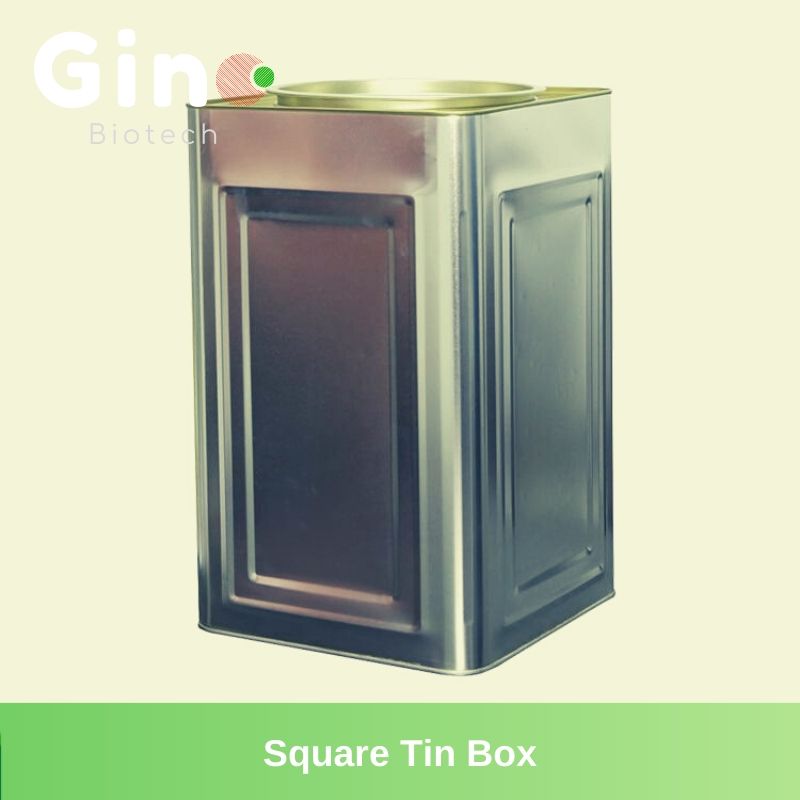
Torba Kraft

Tkana torba PP

Właściwości karagenu
Właściwości roztworu, Stabilność kwasowa, Właściwości żelu, Synergizm z innymi gumami
| Rodzaj karagenu | Lambda | Iota | Kappa |
| Rozpuszczalność | |||
| Gorąca (80 °C) woda | Rozpuszczalny | Rozpuszczalny | Rozpuszczalny |
| Zimna (20 °C) woda | Wszystkie sole rozpuszczalne | Rozpuszczalna sól sodowa | Rozpuszczalna sól sodowa |
| Gorące (80 °C) mleko | Rozpuszczalny | Rozpuszczalny | Rozpuszczalny |
| Zimne (20 °C) mleko | Zagęszcza się | Nierozpuszczalny | Nierozpuszczalny |
Zimne mleko (dodano TSPP) | Zwiększona zagęszczanie lub żelowanie | Zagęszcza lub żeluje | Zagęszcza lub żeluje |
| 50% roztwory cukru | Rozpuszczalny | Nierozpuszczalny | Rozpuszczalny na gorąco |
| 10% roztwory soli | Rozpuszczalny na gorąco | Rozpuszczalny na gorąco | Nierozpuszczalny |
| Żelowanie | |||
| Wpływ kationów | Nieżelujący | Najsilniejsze żele z wapniem | Najsilniejsze żele z potasem |
| Tekstura żelu | Nieżelujący | Miękki, elastyczny | Twardy, kruchy |
| Synereza | Nieżelujący | Nie | Tak |
| Histereza | Nieżelujący | 5-10 °C | 10-20 °C |
| Stabilność podczas zamrażania i rozmrażania | Tak | Tak | Nie |
| Synergia z szarańczą guma fasolowa | Nie | Nie | Tak |
| Synergia z konjac glukomannan | Nie | Nie | Tak |
| Synergia ze skrobią | Nie | Tak | Nie |
| Odwracalność ścinania | Tak | Tak | Nie |
| Stabilność kwasowa | Hydroliza | Hydroliza w roztworze, przyspieszana przez ciepło; żele są stabilne | |
| Reaktywność białek | Silna interakcja białek w kwasie | Specyficzna reakcja z kappa-kazeiną | |
Właściwości karagenu
| E-No. | E 407 |
| Pochodzenie | Ekstrakt z wodorostów |
| Skład chemiczny | 1. Rodzina soli siarczanowanego galaktanu (wysoka zawartość siarczanów 18-40%); 2. D-galaktoza, D-(3-6)-anhydrogalaktoza, grupy estrów siarczanowych |
| Wartość odżywcza (w 100 g) - metabolizm | 0 kJ (0 kcal); Brak resorpcji |
| Zawartość włókien | 100% Błonnik rozpuszczalny |
| Toksykologia | Globalne zatwierdzenie jako dodatki do żywności; lepkość: minimum 5 mPa s jako roztwór 1,5% w temperaturze 75 °C (167 °F) (średnia MW 100 kDa); Europa: ADI (75 mg/kg masy ciała na dzień) i limit MW maksymalnej wartości 5% poniżej 50 kDa |
| Rozpuszczalność w niskiej temperaturze (H2O) | κ-C: tylko sole Na+ są rozpuszczalne, ograniczone pęcznienie soli K+ i Ca2+; ι-C: tylko sole Na+ są rozpuszczalne, sól Ca2+ daje tiksotropowe spęczniałe cząstki; λ-C: wszystkie sole są rozpuszczalne w zimnej wodzie |
| Wygląd roztworu wodnego | Przezroczysty dla czystych ekstraktów, nieprzezroczysty-mętny dla PES |
| Lepkość roztworu w wodzie | Średni do wysokiego (gorące roztwory zamieniają się w żele podczas chłodzenia) |
| Wpływ ciepła na lepkość w wodzie (pH 7) | Wszystkie typy κ-, ι- i λ-C są całkowicie rozpuszczalne w wodzie i mleku w temperaturze T=80 °C (176 °F). |
Rozwój lepkości w wodzie przy pH 7 (T=0-100 °C) | Całkowita rozpuszczalność w wodzie (lub mleku) w T = 80 ° C (176 ° F), lepkość zmniejsza się przez dalsze ogrzewanie (w pełni odwracalne przy pH 7-9), roztwory typu κ- i ι łączą się w żele po schłodzeniu, żele są stabilne w temperaturze pokojowej, żele topią się przez ogrzewanie i ponownie wiążą po schłodzeniu bez utraty wytrzymałości lub tekstury żelu w warunkach neutralnych |
| Stabilność na ścinanie | Rozwiązania są pseudoplastyczne (odwracalne rozrzedzanie ścinaniem); Żele κ-C pękają podczas ścinania (nieodwracalne); Żele ι-C pękają pod wpływem ścinania, ale regenerują się i ponownie żelują po usunięciu naprężeń ścinających. |
| Efekt zagęszczania | Wysoki |
| Stabilność pH | Medium (pH 5,5-9) |
| Rozkład | κ-C + ι-C: hydroliza przez kwas (przyspieszana przez ciepło, niską wartość pH i czas); jednak żele są stabilne w kwasie; λ-C: hydroliza w układach kwaśnych |
| Tworzenie filmu | Wysoki |
| Stabilizacja emulsji | Wysoki |
| Żelowanie | κ-C: najsilniejsze żele z K+; ι-C: najsilniejsze żele z Ca2+; λ-C: brak żelowania z kationami (ale żelowanie przy bardzo wysokich stężeniach soli) |
| Wytrzymałość i stabilność żelu | κ-C: twarde, kruche żele z silną synerezą, niestabilne podczas zamrażania i rozmrażania, histereza 10-20 °C (18-36 °F); ι-C: miękka, elastyczna konsystencja, brak synerezy, stabilny podczas zamrażania i rozmrażania; λ-C: brak żeli, roztwory są stabilne podczas zamrażania i rozmrażania |
| Przezroczystość żelu | Wysoki |
| Tendencja do synerezy żelu | Żele κ-C: silna synereza; Żele ι-C: brak synerezy |
| Wpływ elektrolitów (kationy +, 2+, 3+) | κ-C: silne żelowanie z jednowartościowymi jonami potasu; ι-C: silna żelacja dwuwartościowymi jonami wapnia; λ-C: brak wpływu |
| Reakcja z jonami Ca2+ | Żelowanie za pomocą ι-karagenu |
| Aktywność białka | κ-C. tworzy słabe żele z κ-kazeiną w mleku w celu stabilizacji neutralnych produktów mlecznych i cząstek w zawiesinach; ι-C. i λ-C. mają silną interakcję białkową w kwasie |
| Kontrola krystalizacji | Żele ι-C. i roztwory λ-C. są stabilne podczas zamrażania i rozmrażania, żele κ-C. wykazują synerezę. |
| Synergiczne działanie z innymi hydrokoloidami | κ-karagen tworzy synergistyczne żele (zwiększona wytrzymałość i elastyczność żelu, zmniejszona synereza) z galaktomannanami (np. LBG) i glukomannanem konjac; synergizm między skrobią i ι-karagenem |
| Inne efekty synergiczne | Rozpuszczalność w roztworach cukru 50%: κ-C. jest rozpuszczalny na gorąco, ι-C. jest nierozpuszczalny, λ-C. jest rozpuszczalny; rozpuszczalność w roztworach soli 10%: κ-C. jest nierozpuszczalny, ι-C. i λ-C. są rozpuszczalne na gorąco |
| Negatywne interakcje | - |
| Poziom dawkowania w żywności | Niski do średniego (typowo 0,02-3%) |
Zalety karagenu
Udany dodatek
Karagen jest jednym z najbardziej popularnych i skutecznych dodatków do żywności na świecie, służącym do stabilizacji, zagęszczania i żelowania systemów spożywczych.
Unikalne właściwości funkcjonalne
Zapewnia unikalne właściwości funkcjonalne w produktach spożywczych i systemach niespożywczych.
Bogaty w przeciwutleniacze
Karagen ma działanie przeciwutleniające i inne właściwości, które sprawiają, że jest przydatny w suplementach zdrowotnych.
Poprawa układu trawiennego
Karagen wpływa na rozwój korzystnych społeczności drobnoustrojów w przewodzie pokarmowym.
Niższy poziom cholesterolu
Badania wykazały, że karagen może obniżać poziom lipidów i cholesterolu we krwi.
Korzyści płynące z karagenu
Karagen odgrywa ważną i cenioną rolę we współczesnych preparatach, zapewniając teksturę, strukturę i stabilność fizyczną w produktach spożywczych i niespożywczych.
Jest również wykorzystywany do redukcji kosztów i tworzenia wartości dodanej.
Zastosowania karagenu
Jakie są typowe zastosowania karagenu?
Karagen można znaleźć w wielu produktach spożywczych spożywanych każdego dnia, w tym w jogurtach, serach, mleku czekoladowym i migdałowym, lodach, sosach sałatkowych, dżemach i galaretkach, hot dogach, piwie i innych.
Można go również znaleźć w produktach higieny osobistej, takich jak pasta do zębów, szampony i odświeżacze powietrza, mydła do ciała, płyny do mycia twarzy, kosmetyki do makijażu, karma dla zwierząt domowych i wiele innych.
| Zastosowanie | Poziom użytkowania (%) |
| Zastosowania żelowania na gorąco | |
| Polewa do ciast | 0.60 - 0.70 |
| Ser, imitacja bloku | 2.20 - 2.70 |
| Ser, imitacja pasty do smarowania | 0.30 - 0.35 |
| Desery, żele wodne (sucha mieszanka) | 0.50 - 0.80 |
| Desery, żele wodne (RTE) | 0.60 - 1.00 |
| Desery, żele wodne (bez cukru) | 0.60 - 0.80 |
| Uwięzienie lub hermetyzacja | 1.00 - 2.00 |
| Żywność wytwarzana lub formowana | 2.00 - 3.00 |
| Żele rybne | 0.50 - 1.00 |
| Mrożone ciasto | 0.10 - 0.25 |
| Owoce w żelu | 0.80 - 1.20 |
| Szynka, poddana dalszej obróbce | 0.30 - 0.50 |
| Galaretka, imitacja (niskocukrowa) sucha mieszanka | 1.50 - 2.00 |
| Galaretka, imitacja (niskocukrowa) RTE | 1.00 - 1.50 |
| Majonez, imitacja | 0.50 - 1.00 |
| Makaron | 0.10 - 0.50 |
| Karma dla zwierząt domowych | 0.20 - 1.00 + LBG |
| Karma dla zwierząt domowych, sos | 0.10 - 0.20 + Guar |
| Nadzienie do ciast | 0.30 - 0.50 |
| Nuggetsy drobiowe | 0.40 - 0.70 |
| Drób, dalej przetworzony | 0.25 - 0.50 |
| Mięso czerwone, dalej przetworzone | 0.25 - 0.50 |
| Owoce morza, dalej przetworzone | 1.25 - 1,75 + skrobia |
| Sorbet | 0.15 - 0,30 + pektyna |
| Śmietana | 0.10 - 0,20 + LBG |
| Surimi lub kamaboko | 0.20 - 0,30 + skrobia |
| Sosy pomidorowe | 0.10 - 0,20 + skrobia |
| Bita śmietana | 0.01 - 0.05 |
| Zastosowania zagęszczania na gorąco | |
| Mieszanki do ciasta | 0.10 - 0.30 |
| Śmietanka do kawy | 0.10 - 0.20 |
| Desery, bita śmietana | 0.15 - 0.30 |
| Polewa owocowa | 0.30 - 0.50 |
| Majonez, imitacja | 0.40 - 0,60 + skrobia |
| Bariery przeciwwilgociowe lub glazura mięsna | 0.80 - 1.20 |
| Sos sałatkowy, proces na gorąco | 0.20 - 0.50 |
| Syropy | 0.10 - 0.30 |
| Variegates | 0.30 - 0,80 + skrobia |
| Zastosowania zagęszczania na zimno | |
| Sernik (bez pieczenia) | 0.60 - 1.00 |
| Napoje owocowe | 0.10 - 0.20 |
| Majonez, imitacja przetworzona na zimno | 0.40 - 0,70 + ksantan |
| Sos sałatkowy (sucha mieszanka) | 0.60 - 1.00 |
| Sos sałatkowy (proces na zimno) | 0.20 - 0.50 |
| Zastosowanie | Poziom użytkowania (%) |
| Zastosowania zagęszczania mleka przetwarzanego na gorąco | |
| Mleko wzbogacone w wapń | 0.02 - 0.04 |
| Napój czekoladowy | 0.02 - 0.04 |
| Mleko czekoladowe (HTST) | 0.02 - 0.04 |
| Mleko czekoladowe (UHT) | 0.02 - 0.05 |
| Sos twarogowy | 0.01 - 0.05 |
| Serek śmietankowy | 0.05 - 0.08 |
| Jajeczny gog | 0.05 - 0.12 |
| Odparowane mleko | 0.005 - 0.020 |
| Lody (twarde opakowanie) | 0.010 - 0,015 + guar/CMC/LBG |
| Lody (bezalkoholowe) | 0.02 - 0,03 + guar/CMC/LBG |
| Preparat dla niemowląt | 0.02 - 0.03 |
| Koktajle (RTE) | 0.02 - 0.03 |
| Mleko sterylizowane | 0.01 - 0.03 |
| Napoje sojowe | 0.02 - 0.05 |
| Zastosowania żelowania mleka przetwarzanego na gorąco | |
| Custardy (sucha mieszanka) | 0.20 - 0.30 |
| Niderlandzki vla | 0.015 - 0,045 + skrobia |
| Flany (sucha mieszanka) | 0.20 - 0.30 |
| Płatki (RTE) | 0.20 - 0.30 |
| Flany (sojowe) | 0.20 - 0.30 |
| Puddingi (nadzienie na zimno) | 0.20 - 0.60 |
| Ciasto dyniowe | 0.45 - 0.55 |
| Zastosowania zagęszczania mleka przetwarzanego na zimno | |
| Napoje, wartości odżywcze | 0.10 - 0.15 |
| Chleb | 2.00 - 3.00 |
| Sery do smarowania, sosy | 0.50 - 1.00 |
| Napoje czekoladowe, sucha mieszanka | 0.08 - 0.12 |
| Syropy czekoladowe | 0.20 - 0.40 |
| Desery, sucha mieszanka | 0.15 - 0.20 |
| Desery, napowietrzane (mus) | 0.50 - 1.00 |
| Lody (sucha mieszanka) | 0.50 - 0.80 |
| Polewa bezowa | 0.15 - 0.25 |
Karagen Kappa o dobrych właściwościach żelujących jest powszechnie stosowany w wyrobach cukierniczych. Karagen jest pochodną galaktozy, która jest nierozpuszczalna w zimnej wodzie i stopniowo rozpuszcza się w gorącej wodzie po podgrzaniu do 60°C.
Jednak łatwo ulega hydrolizie w kwaśnym roztworze, tak że siła żelu zostaje zniszczona.
Jednak po podgrzaniu w kwaśnym roztworze bardzo łatwo jest zhydrolizować i zniszczyć siłę żelu, dlatego należy starać się nie używać kwasu podczas procesu produkcji lub użyć niewielkiej ilości kwasu i dodać bufor.
Karagenina ma silny współczynnik absorpcji wody, do 30-40 razy, zbyt duża ilość wody w procesie produkcji wydłuży czas wrzenia, a zbyt mała ilość wody nie może w pełni rozpuścić żelatyny, co wpłynie na zdolność żelowania. Ogólne zużycie wody jest 22 ~ 25 razy większe niż w przypadku karageniny.
Oto sugerowany przepis na cukierki gumowe z karagenem:
Biały cukier: 15 kg
Syrop skrobiowy: 35 kg
Karagen: 0,5 kg
Mączka chleba świętojańskiego: 0,15 kg
Smak: 60~80ml
Kolor: Zgodnie z wymaganiami
Uwaga: Do składników można również dodać umiarkowaną ilość kwasu owocowego i taką samą ilość buforu.
Zgodnie z literaturą, jeśli karagen i mączka chleba świętojańskiego są zmieszane w stosunku od 3:1 do 1:3, wytrzymałość i struktura żelu może zostać zwiększona i poprawiona, oprócz wzmocnienia zjawiska przezwyciężania skurczu odwodnienia.
Skontaktuj się z nami, aby uzyskać więcej przepisów
W oparciu o wieloletnie badania nad karagenem, agarem i gumą konjac oraz ich produktami złożonymi, dostarczamy nie tylko produkty, ale także rozwiązania w zakresie ich stosowania. Pozwól Gino być Twoim kolejnym długoterminowym dostawcą karagenu!
Kliknij tutajCzy karagen jest bezpieczny?
Przytłaczająca liczba dowodów potwierdza wniosek, że karagen jest bezpieczny i odpowiedni do stosowania w żywności.
Organy regulacyjne we wszystkich regionach świata, w tym w Stanach Zjednoczonych, Europie, Chinach, Japonii i Brazylii, uznały karagen za bezpieczny do stosowania w żywności.
Ostatnio, w lipcu 2014 r., Wspólny Komitet Ekspertów FAO/WHO ds. Dodatków do Żywności (JECFA) "stwierdził, że stosowanie karagenu w preparatach dla niemowląt i preparatach do specjalnych celów medycznych dla niemowląt w stężeniach do 1000 mg/l nie budzi obaw". Komitet dokonał przeglądu wszystkich badań, w tym tych dotyczących negatywnych skutków karagenu, i stwierdził, że karagen jest bezpieczny, nawet dla tych najbardziej wrażliwych w naszej populacji - niemowląt.
Ponadto eksperci Światowej Organizacji Zdrowia umieścili karagen w najlepszej możliwej kategorii dla każdego dodatku do żywności, zauważając, że "w opinii komitetu nie stanowi on zagrożenia dla zdrowia".
Międzynarodowa Agencja Badań nad Rakiem uznała karagen za substancję nierakotwórczą. Nie powoduje on również stanów zapalnych przewodu pokarmowego.
Istnieje wiele znanych międzynarodowych firm i grup na całym świecie, które produkują i dostarczają karagen i jego produkty.
Jeśli karagen nie jest bezpieczny, to dlaczego jest coraz więcej jego dostawców?
Formularz kontaktowy
Gino Biotech zawsze wybiera najbardziej wiarygodnych producentów i producentów karageniny, a naszym celem jest być najlepszym dostawcą karageniny i dobrym partnerem dla innych hydrokoloidów z Chin.
Referencje
Nie wierz nam na słowo, po prostu posłuchaj, co mają do powiedzenia nasi zadowoleni klienci!

Importujemy karagen kappa i innych dodatków z Chin do Argentyny każdego miesiąca, a od 2016 roku nawiązaliśmy świetną współpracę z Gino Biotech.
Ich zaangażowanie w naszą działalność jest widoczne na wszystkich etapach realizacji zamówień. Doceniamy ich wspaniałą pracę. Dobry dostawca karagenu!
Daniel Kennedy
Jesteśmy małą fabryką przygotowującą kiełbasy, wybraliśmy tylko sprawdzonych dostawców karagenu, aby mieć pewność jakości i obsługi.
Bez wątpienia Gino jest bardzo dobrym dostawcą i partnerem w zakresie karagenu.Będziemy utrzymywać z nimi długoterminowe dobre relacje w przyszłości.
Cherly Bansal

Powiązane produkty
Znalazłeś coś interesującego?
POZNAJ SWOJEGO NIEZAWODNEGO DOSTAWCĘ KARAGENU - PRODUCENTA JUŻ DZIŚ!
" Wprowadzenie technicznych i funkcjonalnych hydrokoloidów do przemysłu spożywczego. "
" Zostać strategicznym partnerem i szanowanym dostawcą karageniny w świecie hydrokoloidów. "

